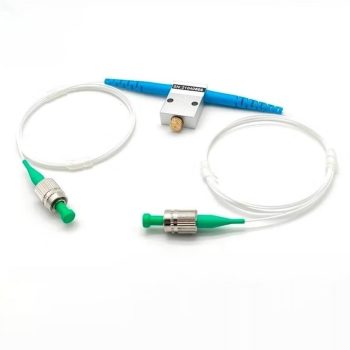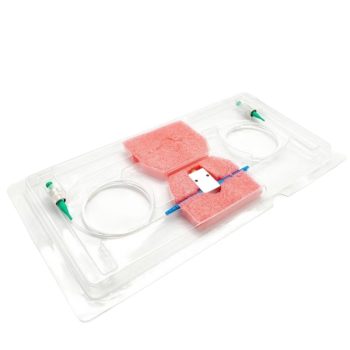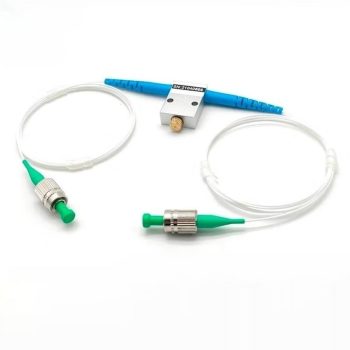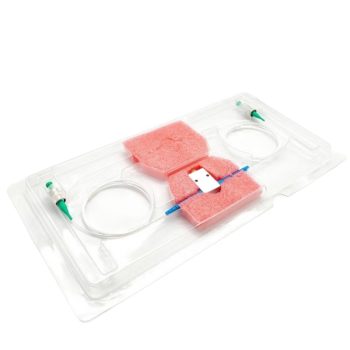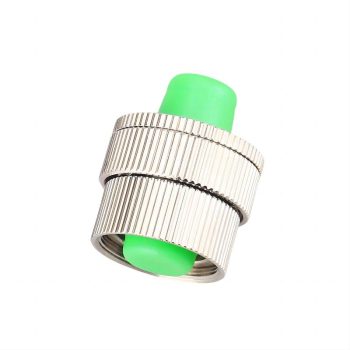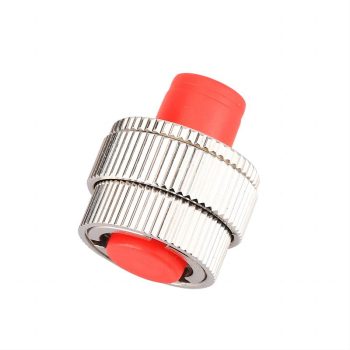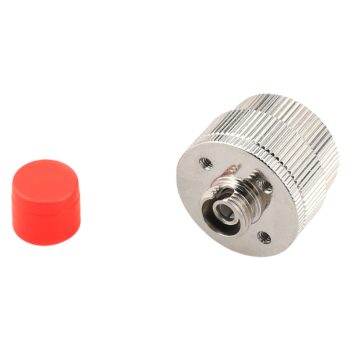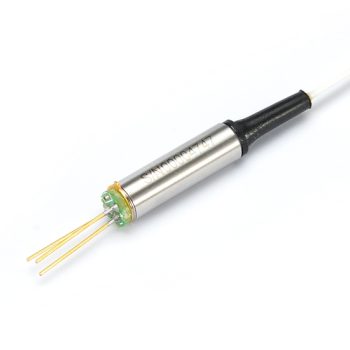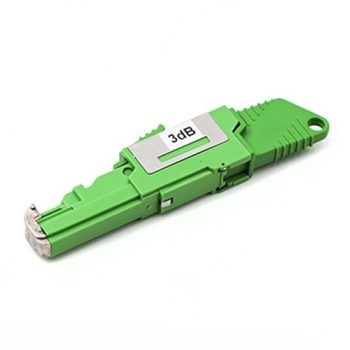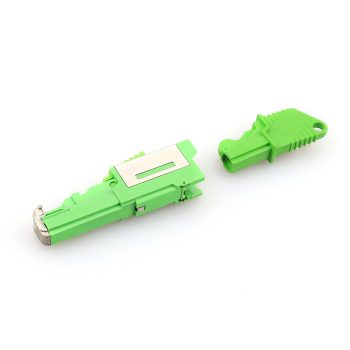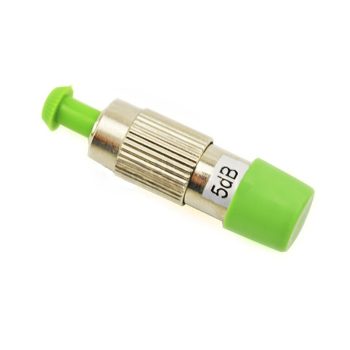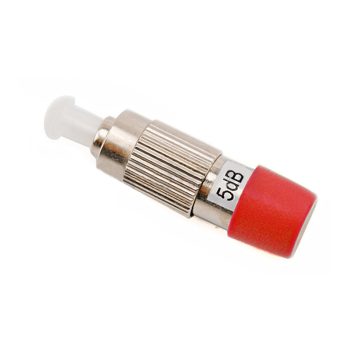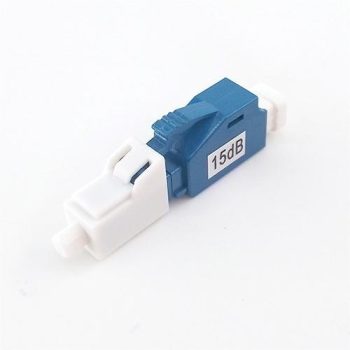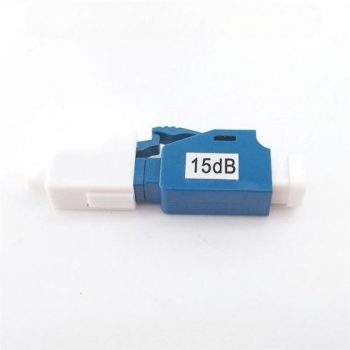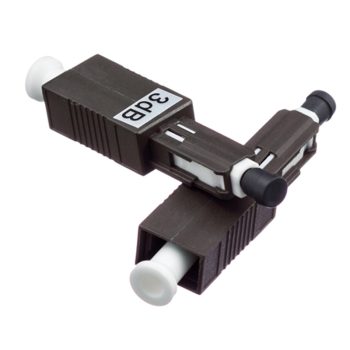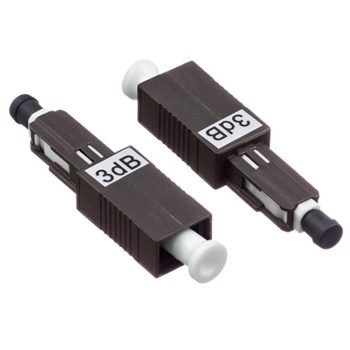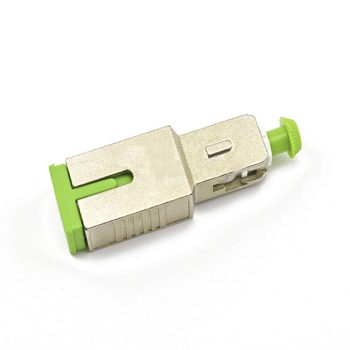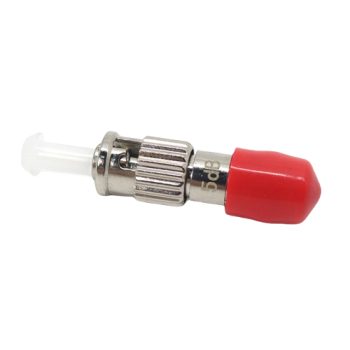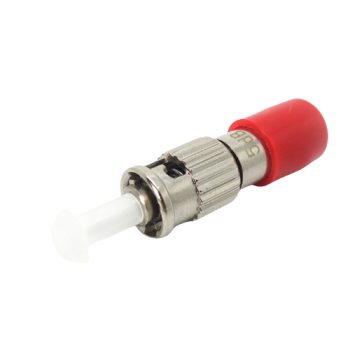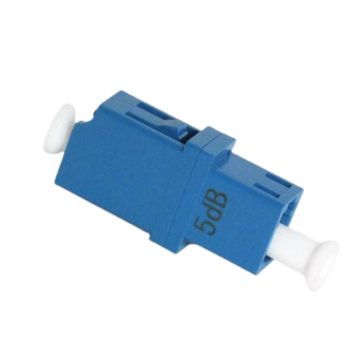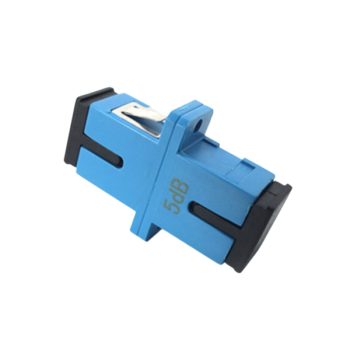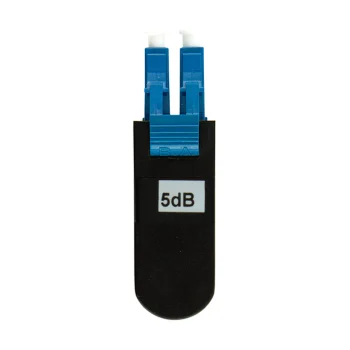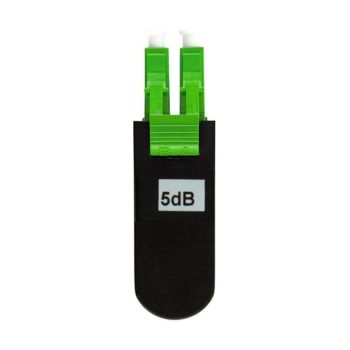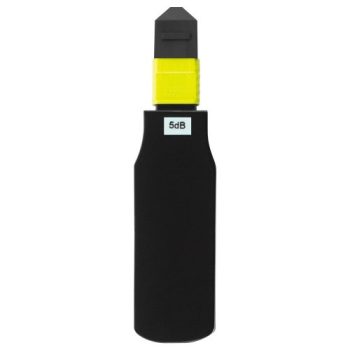Optical Attenuators
Optical Attenuators are optical devices used to regulate the intensity of optical signals, usually used in fiber optic communication systems to regulate the intensity and power of optical signals in order to adapt to different transmission distances, types of optical fibers, and receiver sensitivity and other factors.
The main function of an optical attenuator is to reduce the intensity of an optical signal so that it can be maintained at an appropriate power level within a certain range in a fiber optic communication system. They are usually used in the following situations:
1. Regulating optical power: In fiber optic communication systems, the intensity of optical signals may be too strong and exceed the operating range of the receiver, so optical attenuators are needed to regulate the optical power to the proper level of the receiver.
2. Attenuation Testing: In fiber optic testing and measurement, it is often necessary to reduce the intensity of the optical signal in order to perform accurate testing and measurement.
3. Optical path balancing: In fiber optic communication system, due to the different transmission characteristics of different optical fibers and optical components, the optical path may be unbalanced, so optical attenuators are needed to regulate the intensity of optical signals to keep the optical path balanced.
Optical attenuators are usually of two types: fixed attenuation or adjustable attenuation. Fixed attenuation value optical attenuator usually has a fixed attenuation value, such as 1dB, 3dB, 5dB, etc., used in the system requires a fixed attenuation value of the occasion. Adjustable attenuation attenuators can be adjusted by knobs or other mechanical structures to meet different application requirements.
-
1310/1550nm Singlemode In-Line Variable Optical Attenuator (VOA) $113.16 – $120.51
◎ P/N: 50490
◎ Attention: For a formal quote, please send product details to sales@fiber-life.com.
 Delivery: Order today and it will be shipped before from the U.S. or Hong Kong via FedEx/DHL/UPS. Free shipping on orders over US$200.
Delivery: Order today and it will be shipped before from the U.S. or Hong Kong via FedEx/DHL/UPS. Free shipping on orders over US$200. Warranty: Fiber-Life offers a 1-year warranty, 30-day returns, and 30-day exchanges.
Warranty: Fiber-Life offers a 1-year warranty, 30-day returns, and 30-day exchanges. -
850nm Multimode In-Line Variable Optical Attenuator (VOA) $129.48
◎ P/N: 80024
◎ Attention: For a formal quote, please send product details to sales@fiber-life.com.
 Delivery: Order today and it will be shipped before from the U.S. or Hong Kong via FedEx/DHL/UPS. Free shipping on orders over US$200.
Delivery: Order today and it will be shipped before from the U.S. or Hong Kong via FedEx/DHL/UPS. Free shipping on orders over US$200. Warranty: Fiber-Life offers a 1-year warranty, 30-day returns, and 30-day exchanges.
Warranty: Fiber-Life offers a 1-year warranty, 30-day returns, and 30-day exchanges. -
FC/APC Singlemode Variable Fiber Optical Attenuator (VOA) $11.70
◎ P/N: 80036
◎ Attention: For a formal quote, please send product details to sales@fiber-life.com.
 Delivery: Order today and it will be shipped before from the U.S. or Hong Kong via FedEx/DHL/UPS. Free shipping on orders over US$200.
Delivery: Order today and it will be shipped before from the U.S. or Hong Kong via FedEx/DHL/UPS. Free shipping on orders over US$200. Warranty: Fiber-Life offers a 1-year warranty, 30-day returns, and 30-day exchanges.
Warranty: Fiber-Life offers a 1-year warranty, 30-day returns, and 30-day exchanges. -
FC/UPC Singlemode Variable Fiber Optical Attenuator (VOA) $11.70
◎ P/N: 50539
◎ Attention: For a formal quote, please send product details to sales@fiber-life.com.
 Delivery: Order today and it will be shipped before from the U.S. or Hong Kong via FedEx/DHL/UPS. Free shipping on orders over US$200.
Delivery: Order today and it will be shipped before from the U.S. or Hong Kong via FedEx/DHL/UPS. Free shipping on orders over US$200. Warranty: Fiber-Life offers a 1-year warranty, 30-day returns, and 30-day exchanges.
Warranty: Fiber-Life offers a 1-year warranty, 30-day returns, and 30-day exchanges. -
0~40dB Single-Channel MEMS Variable Optical Attenuator $119.61 – $181.42
◎ P/N: 75664
◎ Attention: For a formal quote, please send product details to sales@fiber-life.com.
 Delivery: Order today and it will be shipped before from the U.S. or Hong Kong via FedEx/DHL/UPS. Free shipping on orders over US$200.
Delivery: Order today and it will be shipped before from the U.S. or Hong Kong via FedEx/DHL/UPS. Free shipping on orders over US$200. Warranty: Fiber-Life offers a 1-year warranty, 30-day returns, and 30-day exchanges.
Warranty: Fiber-Life offers a 1-year warranty, 30-day returns, and 30-day exchanges. -
SM/MM E2000(LSH) Fixed Male-Female Attenuator, 1~30dB Optional $47.50 – $48.00
◎ P/N: 60369
◎ Attention: For a formal quote, please send product details to sales@fiber-life.com.
 Delivery: Order today and it will be shipped before from the U.S. or Hong Kong via FedEx/DHL/UPS. Free shipping on orders over US$200.
Delivery: Order today and it will be shipped before from the U.S. or Hong Kong via FedEx/DHL/UPS. Free shipping on orders over US$200. Warranty: Fiber-Life offers a 1-year warranty, 30-day returns, and 30-day exchanges.
Warranty: Fiber-Life offers a 1-year warranty, 30-day returns, and 30-day exchanges. -
SM/MM FC Fixed Male-Female Attenuator, 1~30dB OptionalRated 5.00 out of 5$4.60 – $5.30
◎ P/N: 50564
◎ Attention: For a formal quote, please send product details to sales@fiber-life.com.
 Delivery: Order today and it will be shipped before from the U.S. or Hong Kong via FedEx/DHL/UPS. Free shipping on orders over US$200.
Delivery: Order today and it will be shipped before from the U.S. or Hong Kong via FedEx/DHL/UPS. Free shipping on orders over US$200. Warranty: Fiber-Life offers a 1-year warranty, 30-day returns, and 30-day exchanges.
Warranty: Fiber-Life offers a 1-year warranty, 30-day returns, and 30-day exchanges. -
SM/MM LC Fixed Male-Female Attenuator, 1~30dB Optional $3.30 – $4.20
◎ P/N: 50547
◎ Attention: For a formal quote, please send product details to sales@fiber-life.com.
 Delivery: Order today and it will be shipped before from the U.S. or Hong Kong via FedEx/DHL/UPS. Free shipping on orders over US$200.
Delivery: Order today and it will be shipped before from the U.S. or Hong Kong via FedEx/DHL/UPS. Free shipping on orders over US$200. Warranty: Fiber-Life offers a 1-year warranty, 30-day returns, and 30-day exchanges.
Warranty: Fiber-Life offers a 1-year warranty, 30-day returns, and 30-day exchanges. -
SM/MM MU Fixed Male-Female Attenuator, 1~30dB Optional $8.80 – $9.20
◎ P/N: 60381
◎ Attention: For a formal quote, please send product details to sales@fiber-life.com.
 Delivery: Order today and it will be shipped before from the U.S. or Hong Kong via FedEx/DHL/UPS. Free shipping on orders over US$200.
Delivery: Order today and it will be shipped before from the U.S. or Hong Kong via FedEx/DHL/UPS. Free shipping on orders over US$200. Warranty: Fiber-Life offers a 1-year warranty, 30-day returns, and 30-day exchanges.
Warranty: Fiber-Life offers a 1-year warranty, 30-day returns, and 30-day exchanges. -
SM/MM SC Fixed Male-Female Attenuator, 1~30dB OptionalRated 5.00 out of 5$4.00 – $4.80
◎ P/N: 50556
◎ Attention: For a formal quote, please send product details to sales@fiber-life.com.
 Delivery: Order today and it will be shipped before from the U.S. or Hong Kong via FedEx/DHL/UPS. Free shipping on orders over US$200.
Delivery: Order today and it will be shipped before from the U.S. or Hong Kong via FedEx/DHL/UPS. Free shipping on orders over US$200. Warranty: Fiber-Life offers a 1-year warranty, 30-day returns, and 30-day exchanges.
Warranty: Fiber-Life offers a 1-year warranty, 30-day returns, and 30-day exchanges. -
SM/MM ST Fixed Male-Female Attenuator, 1~30dB Optional $7.20 – $8.90
◎ P/N: 57877
◎ Attention: For a formal quote, please send product details to sales@fiber-life.com.
 Delivery: Order today and it will be shipped before from the U.S. or Hong Kong via FedEx/DHL/UPS. Free shipping on orders over US$200.
Delivery: Order today and it will be shipped before from the U.S. or Hong Kong via FedEx/DHL/UPS. Free shipping on orders over US$200. Warranty: Fiber-Life offers a 1-year warranty, 30-day returns, and 30-day exchanges.
Warranty: Fiber-Life offers a 1-year warranty, 30-day returns, and 30-day exchanges. -
SM/MM LC/SC/FC/ST Fixed Female to Female Attenuator, 1~15dB Optional $3.18 – $7.14
◎ P/N: 57891
◎ Attention: For a formal quote, please send product details to sales@fiber-life.com.
 Delivery: Order today and it will be shipped before from the U.S. or Hong Kong via FedEx/DHL/UPS. Free shipping on orders over US$200.
Delivery: Order today and it will be shipped before from the U.S. or Hong Kong via FedEx/DHL/UPS. Free shipping on orders over US$200. Warranty: Fiber-Life offers a 1-year warranty, 30-day returns, and 30-day exchanges.
Warranty: Fiber-Life offers a 1-year warranty, 30-day returns, and 30-day exchanges. -
SM/MM LC Fiber Loopback Attenuator Male-Male, 1~20dB OptionalRated 5.00 out of 5$13.80 – $14.10
◎ P/N: 60389
◎ Attention: For a formal quote, please send product details to sales@fiber-life.com.
 Delivery: Order today and it will be shipped before from the U.S. or Hong Kong via FedEx/DHL/UPS. Free shipping on orders over US$200.
Delivery: Order today and it will be shipped before from the U.S. or Hong Kong via FedEx/DHL/UPS. Free shipping on orders over US$200. Warranty: Fiber-Life offers a 1-year warranty, 30-day returns, and 30-day exchanges.
Warranty: Fiber-Life offers a 1-year warranty, 30-day returns, and 30-day exchanges. -
SM/MM MTO/MPO-12 Fiber Loopback Attenuator Male-Male, 1~20dB Optional $135.50 – $136.20
◎ P/N: 60393
◎ Attention: For a formal quote, please send product details to sales@fiber-life.com.
 Delivery: Order today and it will be shipped before from the U.S. or Hong Kong via FedEx/DHL/UPS. Free shipping on orders over US$200.
Delivery: Order today and it will be shipped before from the U.S. or Hong Kong via FedEx/DHL/UPS. Free shipping on orders over US$200. Warranty: Fiber-Life offers a 1-year warranty, 30-day returns, and 30-day exchanges.
Warranty: Fiber-Life offers a 1-year warranty, 30-day returns, and 30-day exchanges.

